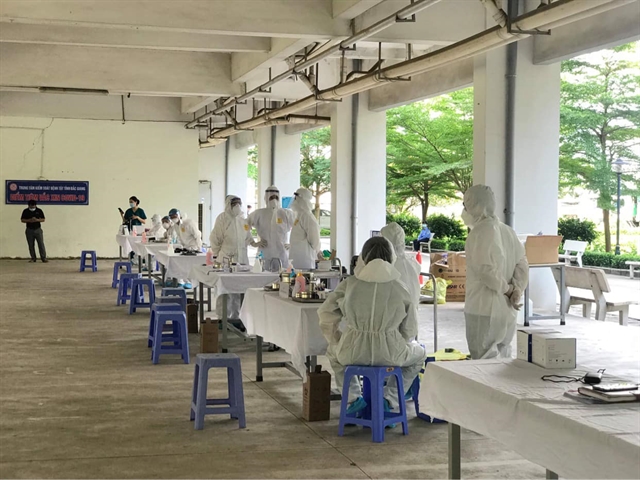 Society
Society

Experts have determined that the death of a driver of Bắc Giang after receiving the COVID-19 vaccine was not due to vaccine quality or vaccine administration process, though the exact cause is still being probed.

|
| A vaccination site for workers in Bắc Giang Province. — Photo from the Ministry of Health |
HÀ NỘI — Experts have determined that the death of a driver of Bắc Giang after receiving the COVID-19 vaccine was not due to vaccine quality or vaccine administration process, though the exact cause is still being probed.
On Tuesday, Bắc Giang Province’s health department held a consultation with experts from the health ministry to discuss the potential causes behind the death of the 46-year-old driver.
The man, residing in Xương Lâm Commune, Lạng Giang District, the northern province of Bắc Giang, worked as a driver for Bích Thuỷ Co Ltd and was given the vaccine shot at Vôi township’s health station, along with other employees of the company on Sunday (June 6, 2021).
Before the injection, he submitted health declaration forms and medical history forms, and underwent a medical screening.
The mans declared medical history did not show any contraindications, and his health conditions at the time of the injection were normal with a body temperature at 36.7 degrees Celsius, heart rate at 80 beats per minute, and blood pressure at 120/80mmHg, and he was deemed eligible to receive the shot.
After being administered the vaccine, he remained at the station for 30 minutes of observation and nothing abnormal occurred.
The man was given instructions to self-monitor his condition during the week post-injection, especially the following 24-48 hours, and to immediately report or go to the local health authorities if he suffered from high fever, convulsions, cyanosis, breathing difficulties, rash or a coma.
He then went home and had lunch with his family, but at 1pm the same day, he suffered from fever, vomiting, and convulsions of limbs, and was brought to Bắc Giang General Hospital.
He died at 3pm the same day.
Initial accounts from the family members and the Bích Thuỷ company revealed he had previously suffered from episodes of convulsions but had not given this information in the medical history form.
Lạng Giang District ordered the health department to disinfect the surrounding areas of the victim’s residence, and conduct rapid COVID-19 testing of the victim and the close contacts and all results returned negative.
Further investigation into the cause of death is underway, but Bắc Giang’s health officials have not ruled out an adverse reaction after COVID-19 vaccine injection in a patient with history of pulmonia, but causes related to quality of the vaccine or inoculation administration procedures have been ruled out.
Almost all doses available in Việt Nam’s COVID-19 vaccination drive to date have been Oxford/AstraZeneca vaccines, either bought from the manufacturer or received via the COVAX initiative.
The first in line were mostly health workers, but given the severe outbreaks in Bắc Giang (with more than 3,000 infections) connected to industrial zones and factory workers since early May, vaccine shots have also been given to these groups of people.
Some 130,000 workers in Bắc Giang have been inoculated to date, and provincial authorities are asking the National Steering Committee for COVID-19 Prevention and Control and the health ministry to allocate an additional 200,000 doses for frontliners and workers here.
Việt Nam has recorded only one death related to the COVID-19 vaccine in early May, a 35-year-old female health worker in the southern province of An Giang who suffered from anaphylactic shock, with a history of allergic reaction to non-steroidal anti-inflammatory drugs.
According to a Tuesday morning report from the health ministry, 1,340,098 doses of COVID-19 vaccines had been administered in Việt Nam as of Monday afternoon.
A total of 38,166 people have received the full two doses. — VNS




